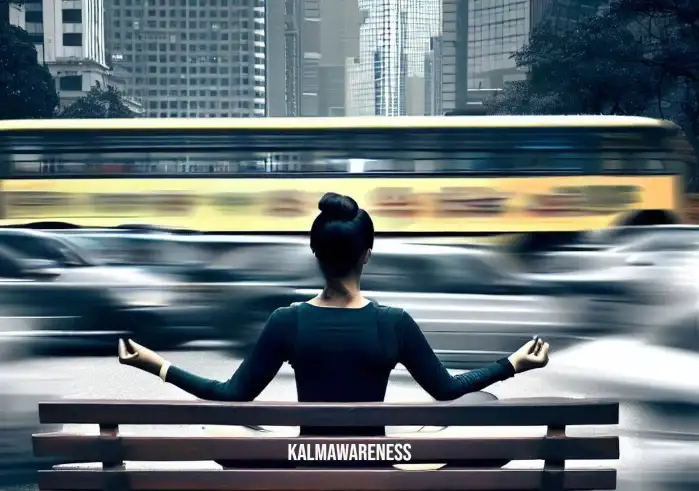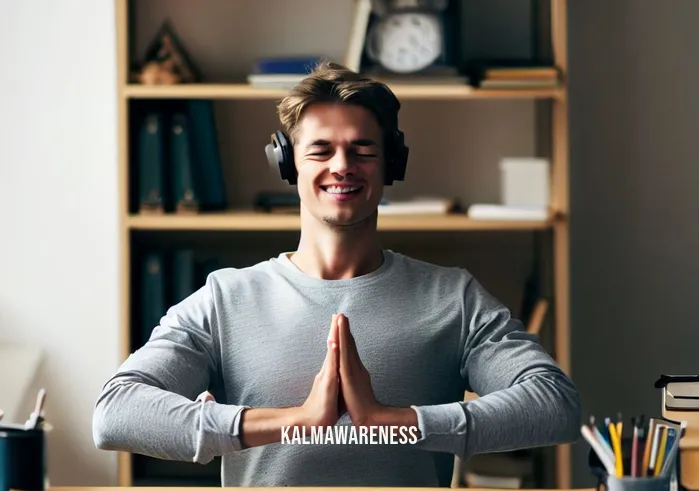Mastering the 61 Point Relaxation Technique: A Gateway to Mindfulness and Inner Peace
Have you heard of the 61 point relaxation technique? It’s an effective relaxation technique used in Yoga Nidra, a type of guided meditation designed to achieve deep relaxation and self-awareness. This method systematically guides you through 61 specific points in your body, promoting a profound state of relaxation and clarity.
The 61 point relaxation technique has roots in the ancient practices of yoga and mindfulness, techniques that have been gaining recognition and popularity for their incredible effects on stress relief and overall well-being. To make the most out of your relaxation journey, we will guide you step by step in understanding and practicing this technique, while aligning it with related practices featured on our website.
Introduction to 61 Point Relaxation
The 61 point relaxation technique is a body scan method used in Yoga Nidra, or “yogic sleep”. This practice is not about falling asleep but entering a state of deep relaxation while remaining conscious and alert. In the Yoga Nidra state, your body is at rest, but your mind is awake, alert, and receptive.
The technique focuses on 61 specific points throughout the body, guiding your attention systematically from point to point. This focal shift allows you to withdraw from external distractions and direct your attention inward, fostering deep relaxation and self-awareness. You can imagine it as a journey within your own body, traveling from point to point with your mind’s eye.
But why 61 points, you might wonder? The reason is rooted in ancient yogic tradition. The number 61 is sacred and symbolic, representing the wholeness of human existence. This technique connects you to this wholeness, enabling you to realize your interconnection with all living beings.
How to Practice 61 Point Relaxation
Before we dive into the practice, let’s briefly discuss how to set the stage for a fruitful session. The setting can dramatically impact the effectiveness of your relaxation exercise. You may want to create a calm and quiet space where you won’t be disturbed. A comfortable position is vital too – lying down is typically recommended, but you can also sit in a comfortable chair if you prefer.
The actual practice involves mentally visiting 61 points in the body in a specific order. Starting at the forehead, you gradually move down through the throat, right side, right leg, right foot, left foot, left leg, left side, back to the throat, and finally the top of the head.
As you mentally touch each point, you can visualize a tiny, radiant sphere of light or warmth, or simply focus on the sensation of that point. The key here is to remain passive and observant, letting go of any effort or strain.
For some, the hardest part is to stay awake and not drift off to sleep. That’s where the concept of “rotating consciousness” comes in, which you can learn more about in the 6 Phases of Meditation.
Keep in mind that it might take a few attempts to get used to the technique, but that’s perfectly normal. The more you practice, the easier it will become to remain conscious and alert throughout the exercise.
Our exploration of the 61 point relaxation technique has only begun. The next section will delve into the benefits of this technique and how you can incorporate it into your everyday life for stress relief and improved self-awareness.
Join us in the next part of this article, where we’ll also explore how this relaxation technique dovetails with other self-care practices such as mindful living, sustainable self-care, and the power of breathing. Furthermore, we’ll discuss how this practice connects with the Mindful Body concept, guiding you to develop a deeper relationship with your physical being. We’ll also explore some resources that can guide you on your journey to mastering the 61 point relaxation. Stay tuned!
Stay with us in this insightful journey towards achieving profound relaxation and greater self-awareness through the 61 point relaxation technique. Let’s continue exploring its benefits and how you can seamlessly incorporate it into your daily routine. See you in the next part of the article!
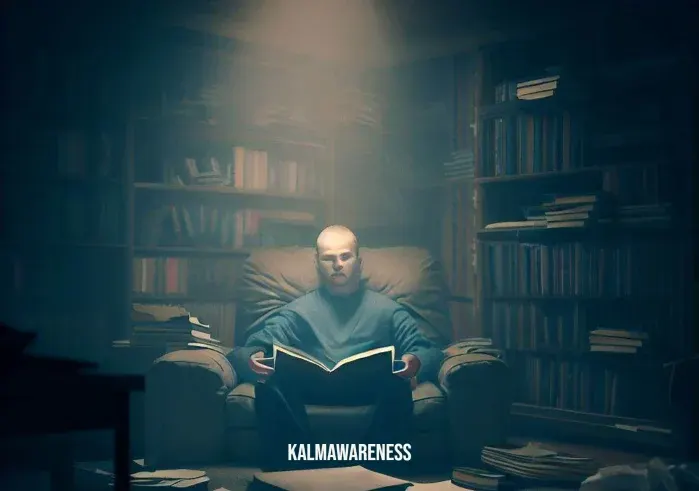
Benefits of the 61 Point Relaxation Technique
The 61 point relaxation technique, a core part of Yoga Nidra, offers a myriad of benefits. It is more than a mere stress-buster; it’s a comprehensive approach to wellness, that fosters deep relaxation, and enhances self-awareness. Here, we unravel some of these significant benefits:
- Deep Relaxation: At the very core, the 61 point relaxation technique is designed to induce profound relaxation. The process of consciously moving your attention through specific points in your body helps you disconnect from external disturbances and reduce internal chatter. The resulting calm and relaxation can be more restorative than traditional sleep. Further insight into relaxation techniques can be found in this article.
- Stress Relief: This technique is a natural stress reliever. By guiding your attention away from stress-inducing thoughts and focusing on your body, it helps quieten the mind. It can be a beneficial addition to your stress relief toolkit.
- Improved Mind-Body Connection: The systematic body scan in this method fosters a stronger mind-body connection. It enhances your awareness of bodily sensations, teaching you to be more present and attentive to your body’s needs. Learn more about befriending your body here.
- Enhanced Self-awareness: The 61 point relaxation encourages inward attention, promoting self-awareness and self-understanding. This inward journey can reveal inner wisdom and truths, fostering personal growth.
- Better Sleep: Regular practice can improve sleep quality. By promoting relaxation and reducing stress, it can help combat insomnia and other sleep-related issues. Discover more about the importance of sleep in self-care here.
- Emotional Balance: Through increased self-awareness, this technique can support emotional regulation, aiding in managing emotions such as anger, anxiety, and sadness. It provides an excellent platform to develop self-compassion.
To illustrate the significant changes one can expect before and after implementing the 61 point relaxation technique in your routine, consider the following table:
| Before 61 Point Relaxation Technique | After 61 Point Relaxation Technique |
|---|---|
| High Stress Levels | Reduced Stress and Anxiety |
| Lack of Focus | Enhanced Concentration and Clarity |
| Poor Sleep Quality | Improved Sleep Patterns |
| Low Self-Awareness | Heightened Self-Awareness |
| Weak Mind-Body Connection | Stronger Mind-Body Connection |
Beyond these benefits, the 61 point relaxation technique offers an accessible entry point into the broader world of meditation and mindfulness. It is a gateway to discovering the transformative power of practices like guided meditation, mindful living, and various other techniques focused on self-awareness, relaxation, and overall wellness.
As we continue to the next part of the article, we’ll explore how to integrate the 61 point relaxation technique into your daily routine and make it a habit. We’ll also delve into some potential challenges you might face and tips to overcome them, using the wisdom found in our Mindfulness on the Go section. Plus, we’ll consider how this technique can complement other self-care practices and mindfulness strategies. Let’s keep exploring together in the next chapter of this holistic guide to the 61 point relaxation technique!
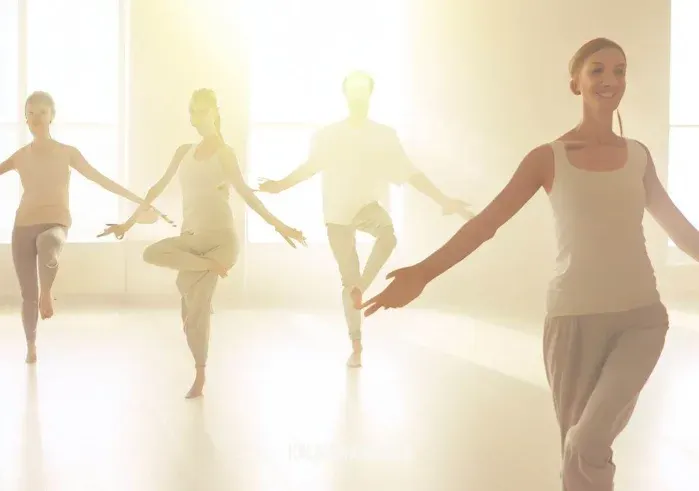
Making the 61 Point Relaxation a Daily Practice
Now that we understand what the 61 point relaxation technique is and its myriad benefits, the next logical step is integrating this technique into our daily routine. Consistency is key in reaping the long-term benefits of any mindfulness practice, and this is no exception. Jon Kabat-Zinn, a renowned mindfulness expert and author, puts it aptly, “Mindfulness is the aware, balanced acceptance of the present experience… It isn’t more complicated than that. It is opening to or receiving the present moment, pleasant or unpleasant, just as it is, without either clinging to it or rejecting it.” Read more about his profound insights in his books.
Creating a Suitable Environment
To ensure the effectiveness of your 61 point relaxation sessions, it is important to create a conducive environment. Choose a quiet and comfortable space where you won’t be disturbed. Make sure the room’s temperature and lighting are suitable for relaxation. Additionally, you could consider creating a specific “meditation spot” that you associate with calm and relaxation, as recommended in our guide to Mindful March 2022.
Consistency Over Duration
While the duration of your sessions can vary, consistency is vital. It’s better to practice for a few minutes daily rather than sporadically in longer sessions. Thich Nhat Hanh, a global spiritual leader, suggests, “Feelings come and go like clouds in a windy sky. Conscious breathing is my anchor.” Learn more about his approach to mindful breathing here.
Starting Your Day Mindfully
The 61 point relaxation technique can be an excellent way to start your day. It helps in setting a calm and focused tone for the day, like a 7-second morning ritual. However, if mornings aren’t suitable, any time when you can commit consistently will work just as well.
Overcoming Challenges
As you start your journey with the 61 point relaxation technique, it’s normal to encounter some challenges. You may find your mind wandering or struggle to focus on the points. Don’t be disheartened; remember, it’s a practice. As Jack Kornfield, a renowned mindfulness teacher, wisely said, “Everything that has a beginning has an ending. Make your peace with that and all will be well.” Learn more about overcoming mindfulness hurdles in our Stress Acronym Survival guide.
Complementing Other Practices
The 61 point relaxation technique can complement other self-care practices. You could follow it up with a calm moment drink, engage in mindful eating, or practice some gentle Yoga movements.
As we wrap up this chapter, remember what Ali Smith, a meditation teacher, said, “You have permission to rest. You are not responsible for fixing everything that is broken. You do not have to try and make everyone happy. For now, take time for you. It’s time to replenish.” Delve deeper into Ali Smith’s meditation practices and carry his words with you on your journey.
In the upcoming part of this article, we will further deepen our understanding of the 61 point relaxation technique and its integration into different life aspects. We will also touch upon advanced tips for maximizing its benefits. Looking forward to seeing you in the next chapter!
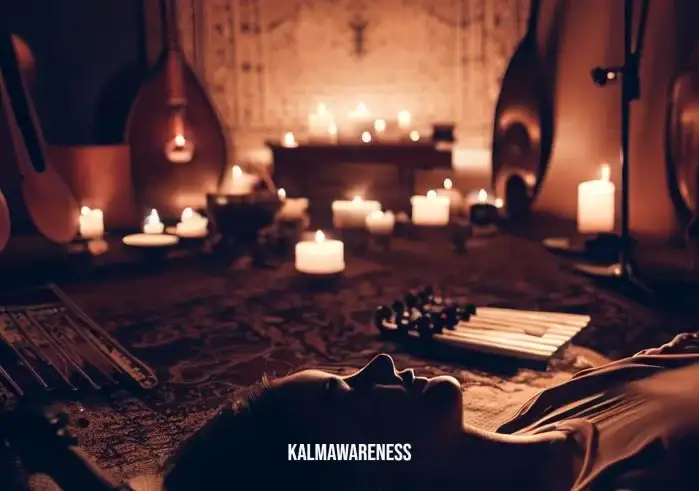
Harnessing the Potential of the 61 Point Relaxation Technique
In our previous sections, we have explored the concept and benefits of the 61 point relaxation technique and how to incorporate it into our daily lives. Now let’s take our exploration one step further, diving into the more profound effects of this practice and how it can enhance your overall well-being and life quality.
61 Point Relaxation and Emotional Health
There’s an intrinsic link between our physical bodies and our emotional health. With 61 point relaxation, you have a tool to navigate this connection. As you journey through the points, you become more attuned to your body and, consequently, your emotional state.
Our Mindful Living Collective platform provides a variety of resources to further explore the intersection of mindfulness, body awareness, and emotional well-being.
Coping with Stress and Anxiety
61 point relaxation is a potent tool in stress and anxiety management. With regular practice, you learn to navigate stressful situations with greater calm and presence. Reflecting on this, Jon Kabat-Zinn said, “You can’t stop the waves, but you can learn to surf.” Explore this metaphor further in our Mindfulness on the Go resource.
Promoting Body Positivity
As the 61 point relaxation technique fosters a deeper connection with your body, it can serve as a means of cultivating body positivity. You learn to appreciate your body, not for how it looks but for its intricacies, strength, and the fact that it’s your unique home. We delve into this topic more in our articles on befriending your body and how to feel connected to your body.
61 Point Relaxation and Sleep Quality
Insomnia and sleep disturbances are common modern-day challenges. The 61 point relaxation technique can be beneficial in fostering healthy sleep patterns by promoting deep relaxation and a quiet mind, crucial for quality sleep.
A fascinating insight on the topic can be found in our Let Relax guide.
Benefits of 61 Point Relaxation
| Benefit | Explanation | Additional Resources |
|---|---|---|
| Emotional Well-being | Helps in understanding and managing emotions | Mindful Living Collective |
| Stress and Anxiety Management | Promotes calmness and equanimity | Mindfulness on the Go |
| Body Positivity | Fosters a healthier body image | Befriending Your Body |
| Sleep Quality | Assists in improving sleep hygiene | Let Relax |
As we conclude this chapter, let’s reflect on the words of Rumi, the renowned Persian poet, “The wound is the place where the Light enters you.” In the context of the 61 point relaxation, every point you touch could be a place where light and awareness enter, illuminating your path to self-awareness and inner peace.
In the next section of our exploration of the 61 point relaxation technique, we’ll delve into its application for special circumstances, such as during illness, recovery, and significant life changes. We’ll also look at how the 61 point relaxation technique can form part of a holistic self-care routine. So, continue the journey with us!

Expanding the Scope of 61 Point Relaxation
Having delved into the profound potential of the 61 point relaxation technique, let’s expand our understanding of how this method can be applied in specific circumstances. Whether you’re dealing with illness, recovery, or significant life changes, 61 point relaxation can be a powerful ally.
61 Point Relaxation in Illness and Recovery
Physical illness often brings emotional and mental stress. Incorporating the 61 point relaxation technique into your healing journey can provide emotional solace and enhance your body’s innate healing capabilities. Our Ease Your Pain guide shares additional techniques for dealing with physical discomfort and stress.
61 Point Relaxation in Times of Change
Change, though a natural part of life, can often be unsettling. The 61 point relaxation technique provides a steady anchor amidst the ebb and flow of life’s changes. Remember, mindfulness is the key. As Lao Tzu once said, “Life is a series of natural and spontaneous changes. Don’t resist them – that only creates sorrow. Let reality be reality.”
For more insights into dealing with change, visit our Removing Oneself 7 Little Words guide.
61 Point Relaxation and Addiction Recovery
The journey to recovery from addiction is a difficult one. The 61 point relaxation technique can become a tool for self-care and self-discovery, aiding the recovery process. For more resources on recovery, explore our Addiction Recovery Meditation resource.
61 Point Relaxation as part of a Self-Care Routine
Self-care is not just about pampering oneself; it’s about cultivating a loving relationship with oneself. Incorporating the 61 point relaxation technique into your self-care routine can enhance your connection with yourself and promote overall well-being. Our Sustainable Self-Care and 5 Minute Self-Care guides offer practical tips for cultivating a self-care routine.
Applications of 61 Point Relaxation
- Illness and Recovery: Helps alleviate emotional and mental stress, promoting faster healing. (Recommended resource: Ease Your Pain)
- Times of Change: Provides stability and a sense of grounding during unsettling times. (Recommended resource: Removing Oneself 7 Little Words)
- Addiction Recovery: Serves as a tool for self-care and self-discovery, aiding the recovery process. (Recommended resource: Addiction Recovery Meditation)
- Self-Care Routine: Enhances connection with oneself, promoting overall well-being. (Recommended resources: Sustainable Self-Care, 5 Minute Self-Care)
As we end this chapter, let’s ponder over the words of Buddha, “To keep the body in good health is a duty, otherwise we shall not be able to keep our mind strong and clear.”
In the final part of our comprehensive guide on the 61 point relaxation technique, we’ll dive into frequently asked questions about this technique and provide some additional resources for further exploration. So, let’s continue our journey into the realm of relaxation and healing. Stay with us!

61 Point Relaxation: The Path to Enlightened Relaxation
In this last segment of our extensive guide to the 61 point relaxation technique, let’s resolve any lingering doubts you may have, address frequently asked questions, and provide you with further resources to continue your exploration. With every new discovery and step you take in this journey, remember the wisdom shared by Ali Smith about meditation, “It’s not about perfection, it’s about practice.”
Frequently Asked Questions
- Is 61 point relaxation technique difficult for beginners?Not at all. It might seem intimidating at first, but the beauty of the 61 point relaxation technique is that it is accessible to everyone. For guidance in starting your meditation journey, check out our article Meditating Girl.
- Can I practice the 61 point relaxation technique anywhere?Yes, absolutely! You can practice it wherever you find it comfortable and calm. You may also want to read Mindfulness on the Go to explore more about practicing mindfulness anywhere.
- How often should I practice the 61 point relaxation technique?It depends on individual needs and availability. But, consistency is the key in experiencing significant results. Take a look at our 7 Second Morning Ritual to understand the importance of consistency in practices like these.
- Can 61 point relaxation technique help with my anxiety?Definitely. It is a powerful technique to combat stress and anxiety. You might find our 54321 Anxiety Trick helpful in dealing with anxiety.
As we wrap up our deep dive into the 61 point relaxation technique, we invite you to explore this fascinating world of mindfulness further. Embrace the wisdom from Breathe Magazine, “Just breathe. Let go. And remind yourself that this very moment is the only one you know you have for sure.”
We hope that this comprehensive guide to the 61 point relaxation technique has given you a strong foundation for your mindfulness journey. For further learning, the Mindful Living Collective is a fantastic resource.
Here’s to your journey of relaxation, discovery, and self-growth. And remember, each journey starts with a single step. You’ve taken yours by embracing the world of 61 point relaxation. Keep exploring, and until next time, breathe, relax, and live in the present moment.
Thank you for joining us on this exploration of the 61 point relaxation technique. We hope to see you soon for more enlightening journeys into mindfulness and stress relief!
